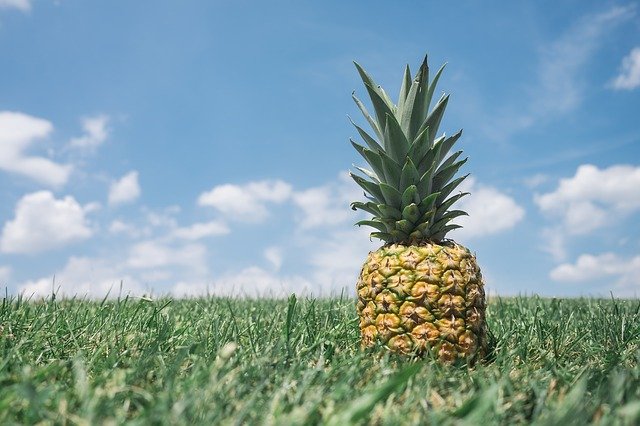By Lynda Kiernan-Stone, Global AgInvesting Media
Global fruit and vegetable giant Dole has filed with the U.S. SEC for an IPO on the New York Stock Exchange as a closing move connected to its merger with Ireland’s Total Produce.
Dole has been back and forth between being public and private in recent years. David Murdock, chairman and CEO of Dole Foods, first took the company private in 2003, then public in 2009, and finally private again in 2013 when he reached an agreement with the company to acquire it in a $1.2 billion cash deal. However, since then, Dole has been looking to go public once again, as consumer demands have shifted toward more health conscious food choices, increasing the demand for fruits and vegetables.
Five years after going private in 2013, news broke that Total Produce agreed to acquire a 45 percent stake in Dole for $300 million in 2018, giving Dole an enterprise value of about $2 billion at the time.
In February of this year the announcement was finally made that Dole was set to merge with Total Produce, the leading fresh produce company in the EU, to result in a combined entity that will be the largest fresh produce company in the world.
This deal, which is expected to close in late July, not only simplifies the structure of the two companies under common ownership through full operational integration, realization of synergies, and value creation, it also will result in a company that is twice as large as its closest rival, with combined sales of $8.97 billion and gross profits exceeding $696 million last year.
Fueling Dole’s engine is pineapples, which account for 45 percent of products for the combined company. Second is bananas, at 27 percent, and various fresh vegetables and salad mixes which account for the last 28 percent.
To give a better idea of the scale we’re talking about, Dole has a distribution footprint involving more than 300 products sourced from more than 30 countries, which are then sold across 80 global markets, according to its filing. In addition to the long-standing relationships Dole has created with independent growers around the world, including joint ventures and international partnerships, the company owns approximately 109,000 acres of farmland and other land holdings worldwide, including 5,000 acres of actively marketed surplus land for sale in Oahu, Hawaii. It also owns 250 global facilities, including five salad manufacturing plants, 12 cold storage facilities, 75 packing houses, and 162 distribution and manufacturing sites.
And as consumers grow more health-conscious and shift their buying dollars toward fresh produce, the combined company forecasts a CAGR of 2.7 percent for its U.S. and EU markets between 2020 and 2025.
“We are focused on being an enthusiastic, powerful advocate of good diet, health and well-being, and supporting consumers in making healthier choices by consuming more fruits and vegetables,” stated the company in its F-1 filing.
Despite its massive size, Dole continues to identify areas of its business with potential for growth. But this might not be as easy as it once was given the recent SPAC listings of highly-efficient, tech-driven, flexible, and nimble competitors.
In February of this year AppHarvest announced its merger with SPAC Novus Capital, listing on the Nasdaq at a valuation of $1 billion. Just as the startup announced that it had begun shipping tomatoes from its first harvest, the merger with Novus Capital was completed, with the new company, which will remain named AppHarvest, trading on the Nasdaq under the symbol APPH.
The deal provided $475 million to the company, including $375 million fully committed common stock PIPE at $10 per share anchored by existing and new investors Fidelity Management & Research Company, Inclusive Capital, and Novus Capital Corporation, and others.
Only one month later another rival entered the ring as vertical farming company AeroFarms announced its merger with SPAC Spring Valley Acquisition to also list on the Nasdaq with an eye toward a valuation of $1.2 billion.
AeroFarms uses advanced technologies to take agricultural production to the next level without the use of soil, herbicides, pesticides, or fungicides. Employing proprietary technologies and software-controlled LED grow lights, AeroFarms’ vertical indoor farms grow crops suspended above a nutrient rich solution with water, oxygen, and nutrients misted onto the plants’ roots. This system allows AeroFarms to produce crops twice as fast as traditional farming, reflecting productivity 390 times greater per square foot, using 95 percent less water.
Likewise, from its location in Central Appalachia, AppHarvest’s 60-acre CEA facility (one of the largest in the world) is within less than a day’s drive to 70 percent of the entire U.S. population, lowering diesel fuel costs by 80 percent. The company’s tech-driven indoor farms grow high-quality produce using methods that use 90 percent less water than traditional field production (and 100 percent recycled rainwater), giving its non-GMO, chemical-free fruits and vegetables a competitive advantage against low-cost foreign imports.
Even though Dole has scale on its side, can it remain competitive with rivals such as these, employing the most-advanced technologies to efficiently grow fresh produce where demand is strongest? Time will tell.
– Lynda Kiernan-Stone is editor with GAI Media, and is managing editor and daily contributor for Global AgInvesting’s AgInvesting Weekly News and Agtech Intel News, as well as HighQuest Group’s Oilseed & Grain News. She can be reached at lkiernan@globalaginvesting.

